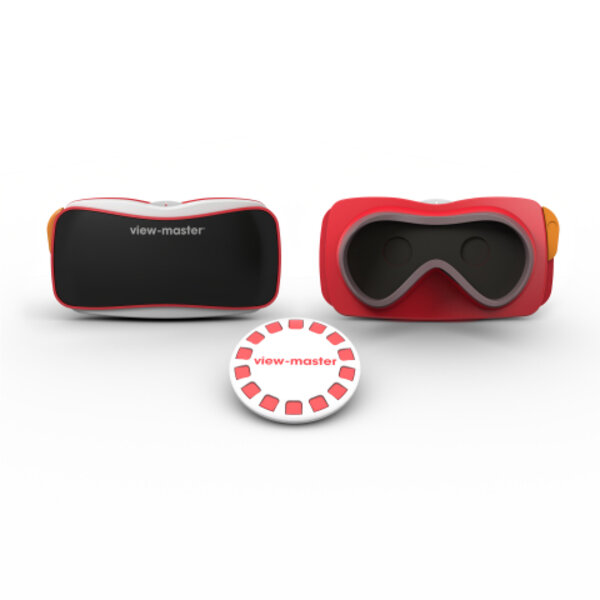View-Master 2.0: Mattel teams up with Google for virtual reality toy
Loading...
“Click, swish” – the sound of a View-Master switching to the next slide is one that transports nearly everyone back to their childhood and evokes memories of exploring new places from a circle of sliding photos.
The “Click, swish” experience has now been upgraded for 2015 – an experience in which a dinosaur could stand next to you at a natural history museum, and you can view 3-D scenes of Paris or Alcatraz Island.
The View-Master has gone virtual reality.
On Friday, Mattell announced that this fall it will release a version of its iconic View Master that works with Google Cardboard – the DIY virtual reality headset that works with a smart phone.
In essence, the View-Master will feel the same externally, but internally the experience has been updated for the smart phone generation. Kids will clip a smart phone into the viewing chamber and open an app designed by Mattel. The classic circular photo reel will be replaced with an “experience wheel” that works with the app to create an interactive digital experience depending on the topic of the wheel. From there, people can explore 3-D renderings of sites around the world, see educational blurbs pop up next to exhibits in museums, and even play games based off popular Mattel brands, such as Barbie and Hot Wheels.
The new View-Master will also work with any Google Cardboard app, allowing kids to explore beyond the Mattel-created virtual world.
"By working with Google's Cardboard platform, we are now able to take that experience even further bringing the discovery and immersive viewing experience of the View-Master to the digital age," says Doug Wadleigh, senior vice president of Toy Box at Mattel, in a release. "Combining technology and innovation with this classic toy gives kids an enhanced experience allowing for play opportunities not yet imagined through new, digitally curated content."
A partnership between View-Master and Google Cardboard makes a lot of sense when you put the hardware side by side. The View-Master has remained a popular toy since its debut in 1939, and has remained that way by offering a sense of what it is like to be somewhere else. But it has largely kept the same mechanical technology (essentially a personal slide show viewer) since its start. Google Cardboard on the other hand offers people a way to experience new places through technology that has become nearly ubiquitous – smart phones – but since debuting has mostly been used by tech insiders looking to play around with virtual reality apps. This new partnership could bring the View-Master to the next level of kids toys, while putting Google Cardboard in the hands of more people than ever before at a time when virtual reality is picking up some serious speed.
This news comes just after LG announced it will offer a free LG G3 virtual reality headset modeled after Google Cardboard with each of its new LG G3 phones in hopes at getting a piece of the virtual reality hype.
The virtual reality View-Master will go on sale this fall for $30 with one experience wheel. Additional experience wheel three-packs cost $15 apiece.






